If you love to have many plants in your home, it’s inevitable that at some point, bugs will start to appear and colonize them. These voracious predators can sometimes cause illnesses and even death, depending on the insect.
The good news is that houseplant pests can be effectively controlled by introducing good insects, which will feed on them, reducing their population and the damage they cause.
Many beneficial insects prey on multiple pests, while others are more selective.
Some are very visible, such as ladybugs, so not everyone will enjoy having them indoors. Others, though, are just as effective and almost impossible to see through the naked eye.
These might be a good choice if you really can’t stand the sight of any insect at all.
- Related article: Garden Insects on Plants
And if you’re still not convinced, consider that in our homes we are already sharing space with many more insect species that we like to acknowledge.
Plus, releasing these insects is not only highly effective, but it’s the cleanest and safest way of controlling bugs, without using any chemical pesticides.
1. Ladybugs (Coccinellidae Family)
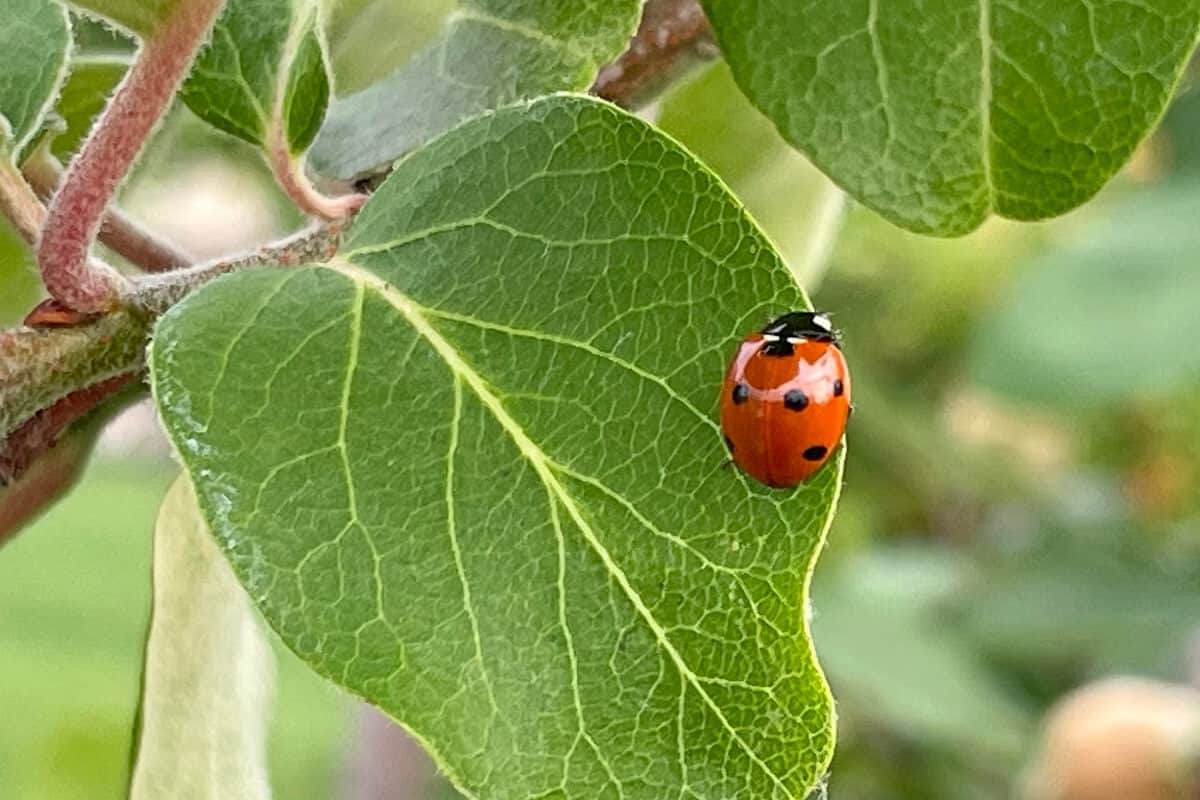
Ladybugs are the most popular beneficial insect and for good reason. Their best quality is that they feed on a wide variety of bugs, such as spider mites, thrips, mealybugs, whiteflies, scale, and aphids.
They’re also easy to see, and while for some people this may seem like a downside, it’s actually quite an advantage.
Being able to find them easily allows you to check they are thriving and doing their job, so to speak.
That’s useful because sometimes ladybugs will crowd in front of the windows and ignore common houseplant pests until you get them back on track.
You can easily buy ladybugs, even online. They are sold as adult ladybugs and you will simply have to open the container they are sold in and let them find your plants.
Read more in-depth about Ladybug Facts and Information.
2. Green Lacewings (Chrysoperla Carnea)
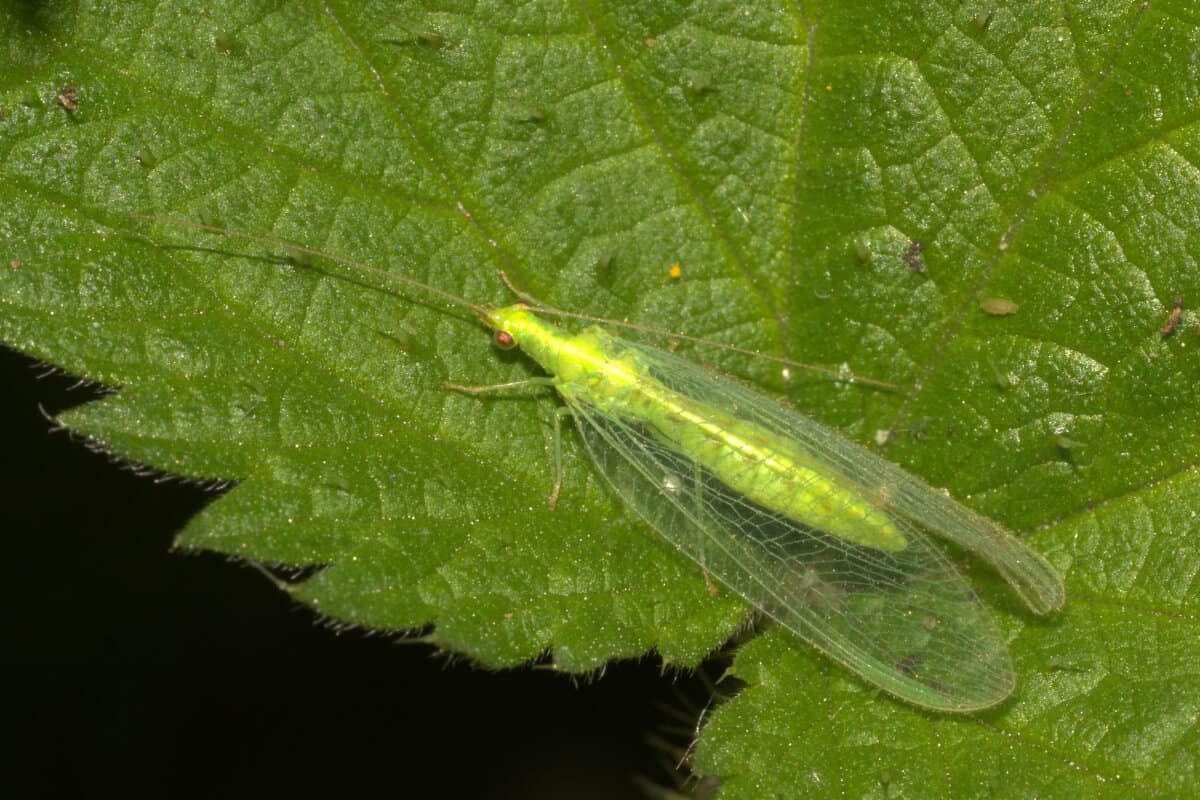
Green lacewings, also known as “aphid lions”, prey on most household pests, which makes them great beneficial insects to introduce to your plants. The exception is the adult hard scale, which they ignore.
Green lacewings go through a larval stage of development, which looks very different from their adult form.
You can find for sale green lacewings of any age, from eggs to the adult stage. The most effective ones are the younger lacewings, as they have the most appetite.
When they are mature, they don’t eat as much, as most insects.
The best then is to buy the lacewing eggs or larvae. At this stage, they still can’t fly and you will have to put a few of them in your indoor garden or garden centers.
When they mature, green lacewings become bright green bugs with transparent wings that you will be able to see flying from plant to plant.
They might then lay eggs, but if they don’t, you should consider releasing a second batch of larvae 2-3 weeks after the first for pest management reasons.
3. Minute Pirate Bugs (Orius Insidiosus)
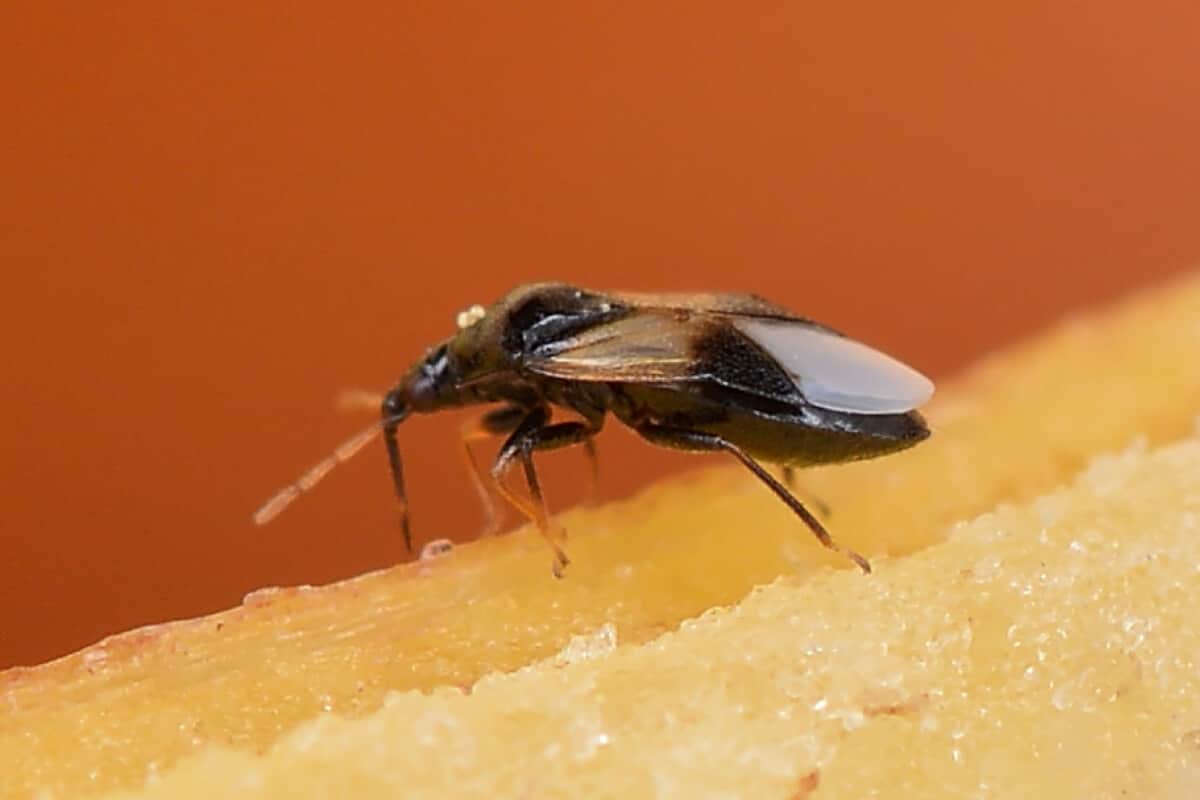
Minute pirate bugs are perfect for people who don’t want to see insects around the house. They are so tiny that it’s almost impossible to see them.
Like green lacewings, minute pirate bugs consume most of the pests you will find in your house, except scale.
They are most effective against thrips, which are uncommon pests but can cause great damage to your plants if not controlled.
These tiny, thin harmful insects suck the lymph from the leaves until they appear covered with white spots.
You can release a few individuals for each infected plant and they will hardly move, except to seek a new plant if they finish the food on the first one.
4. Mealybug Destroyer (Cryptolaemus Montrouzieri)
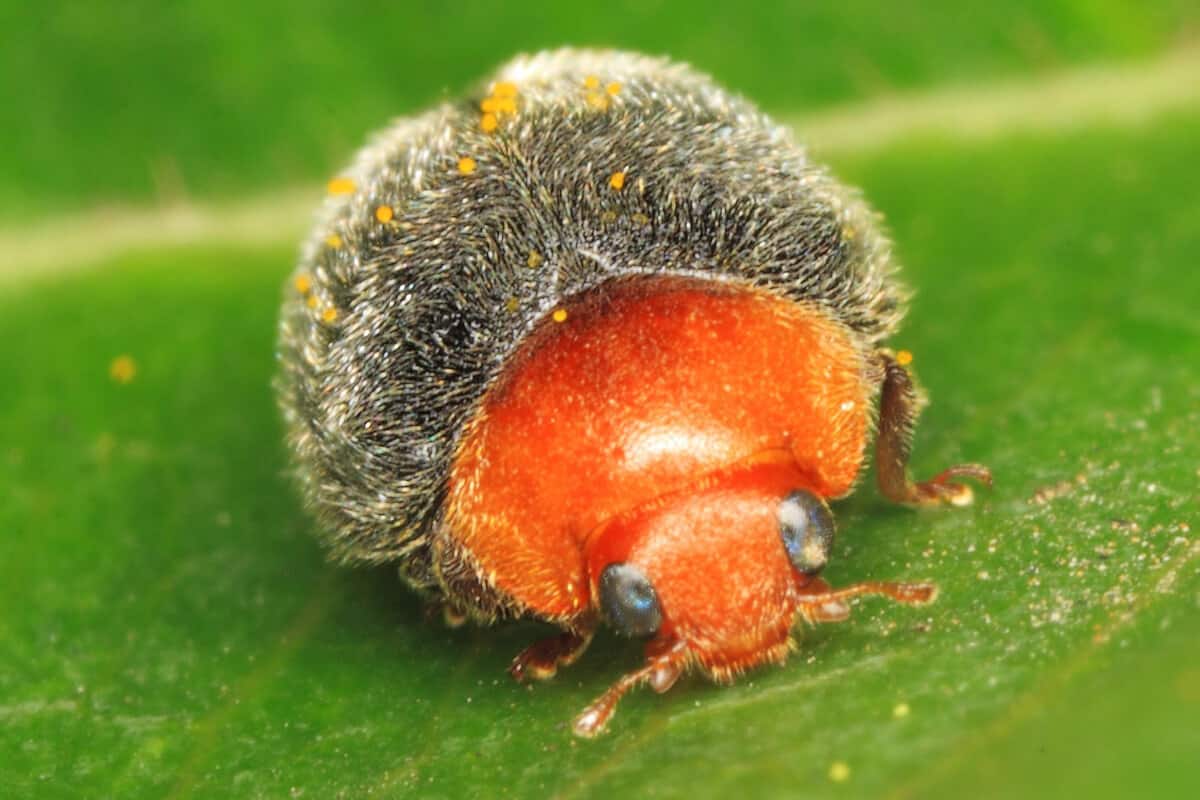
As you can probably tell by their name, these beneficial insects love to eat mealybugs. They also feed on other pests, such as aphids, but if mealies are present, they will mostly ignore the others.
Mealybug destroyers look a bit like ladybugs but with a black body and orange head.
They can be visible around the house, as they tend to gravitate towards light sources, such as windows and lightbulbs.
In this case, you can simply carry them back to the plants, for example shooing them gently on a piece of cardboard. Once they are next to their prey, they hardly ever stop eating.
Mealybug destroyers are sold as adults, so you can simply let them fly away from the container they are sold in.
5. Cucumeris Mite (Amblyseius Cucumeris)
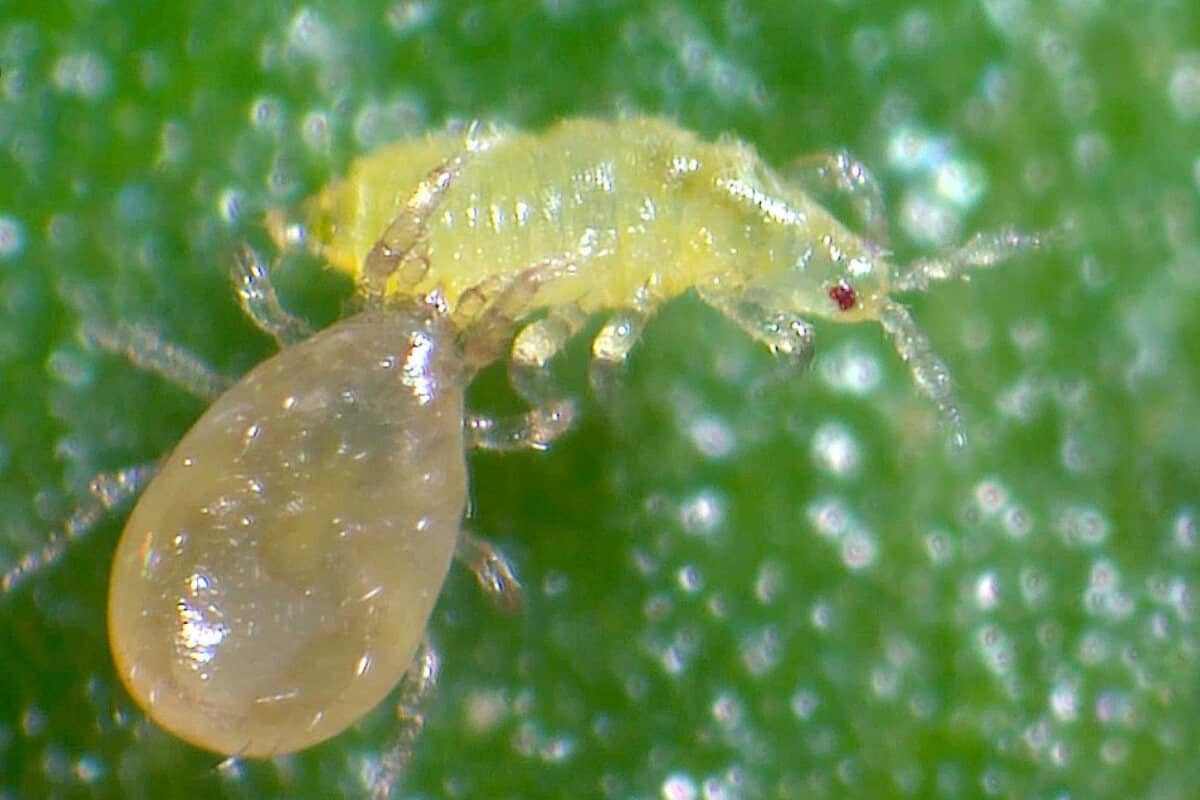
The Cucumeris Mite is a microscopic predatory mite so in order to see it you will have to use a magnifying glass. It’s actually difficult to distinguish from similar species, as its morphology can vary greatly.
Even its color changes, depending on what it has been feeding on. It can go from a light pink to a tan color.
These mites mainly prey on thrips and are very effective in controlling their population, particularly on plants that produce pollen.
Cucumeris mites feed on both thrip eggs and larvae. Apart from thrips, they also eat spider mites, whitefly, psyllids, and aphids.
They are sold in sachets that contain a temporary food source and can be hung on your plants.
6. Amblyseius Californicus
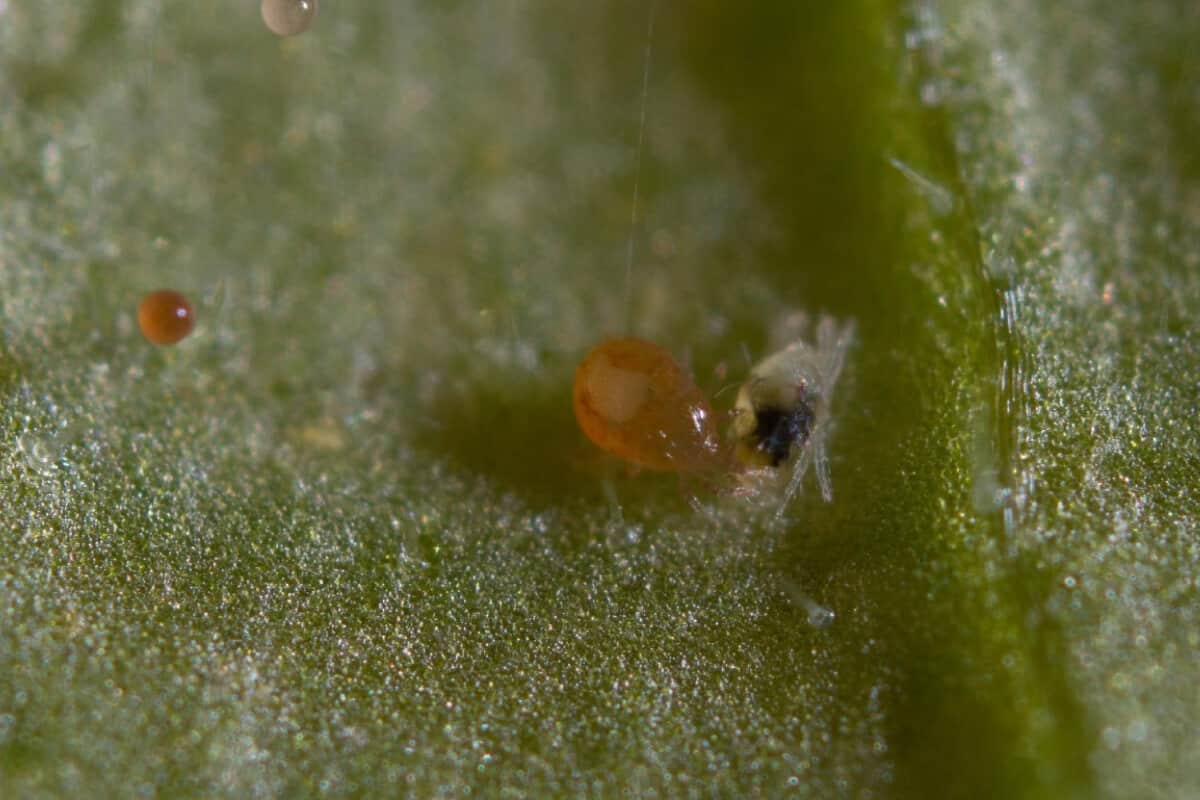
Amblyseius Californicus, also known as Neoseiulus Californicus, is also a predatory mite, and just like its relative Amblyseius Cucumeris, it is very small. It has long legs and is bright red in color.
This mites specializes in eating all stages of development of spider mites, but it can also feed on other mites and on thrips.
Moreover, this beneficial insect can survive on pollen if the preys are not available.
This can be particularly useful because it means that these insects can be introduced as a preventive measure, even before you notice any signs of an infestation.
Amblyseius Californicus is very effective in controlling mites that attack most potted plants, so it’s a great addition to your bug population.
7. Rove Beetles (Staphylinidae Family)
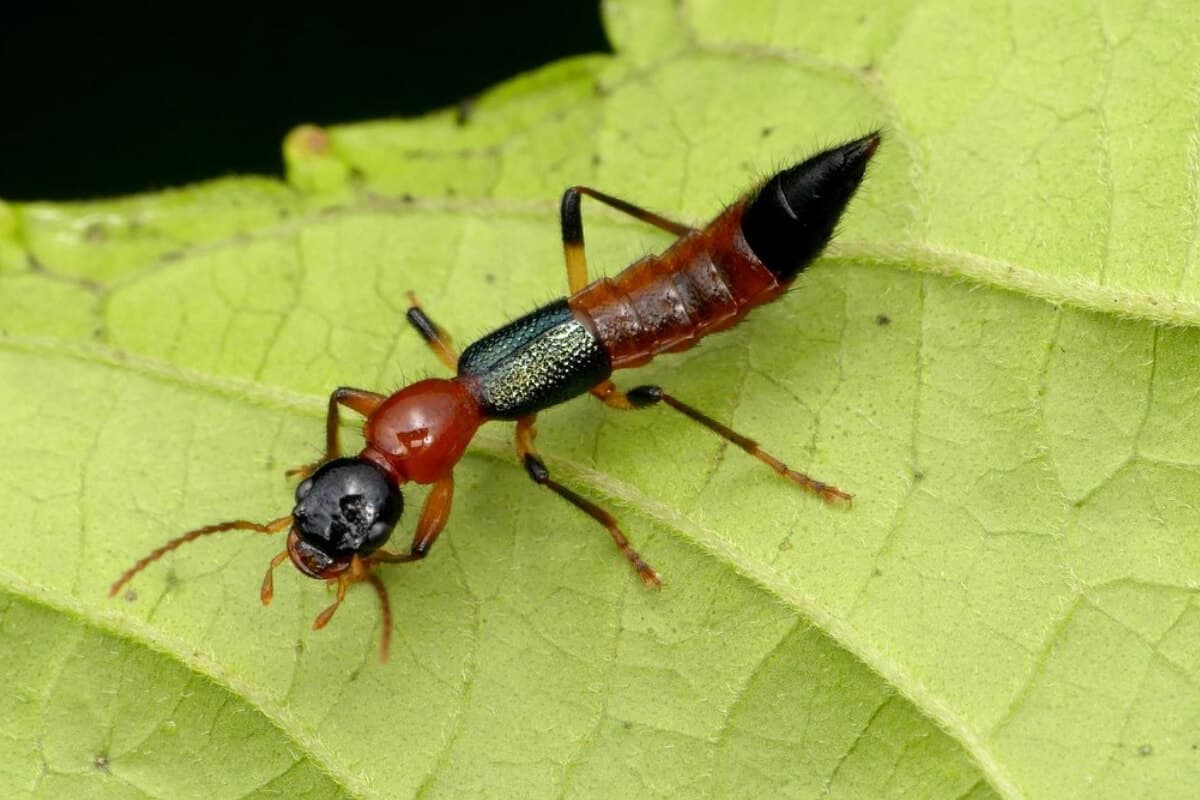
Rove beetles have short upper wings and they can raise their abdomen like scorpions when scared. They are predatory insects both at the larval stage and as adults.
Some Rove beetles prey on a variety of pests, such as other beetles, flies, millipedes, ticks, caterpillars, and the larvae of wasps.
Others are more specialized, such as those belonging to the Aleochara genus, which targets root maggots. Rove beetles thrive in dark, moist places so they are often found in the soil, where they usually lay their eggs.
In some species, the larvae mature into adults inside the body of their prey. Be careful of handling them, because they release a toxin that can cause contact dermatitis.
8. Spider Mite Destroyer (Stethorus Punctillum)
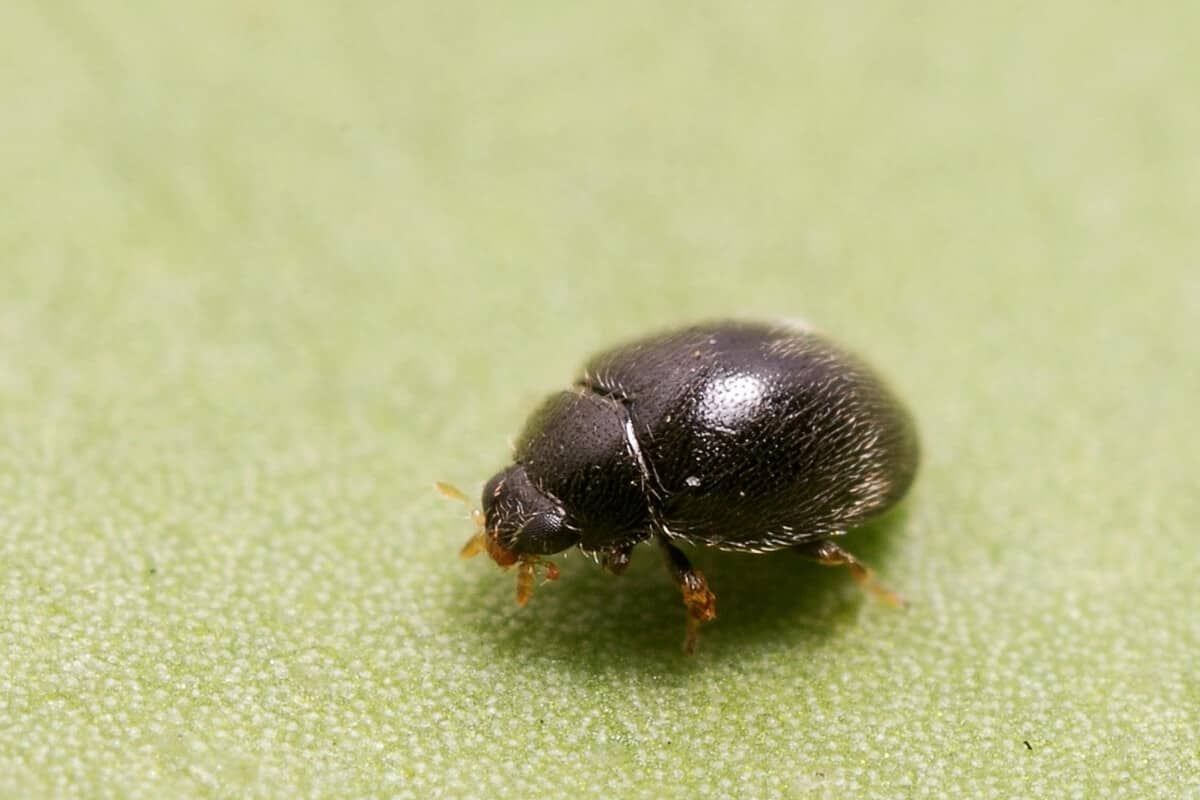
Also known as the lesser mite destroyer, this bug is from the Coccinellidae family, like ladybugs.
In the United States, it’s an exotic species that has been used to fight off different species of spider mites, especially the two-spotted spider mite (Tetranychus urticae), the European red mite (Panonychus ulmi), the spruce spider mite (Oligonychus ununguis), and the southern red mite (Oligonychus ilicis).
All Stethorus species are tiny, hairy, black beetles as adults.
Experimentally, it has been shown that these bugs are most effective on pests that attack cucumbers and peppers. Also, they work best if used in tandem with other predators, for example Amblyseius californicus.
9. Tachinids Flies (Tachinidae Family)
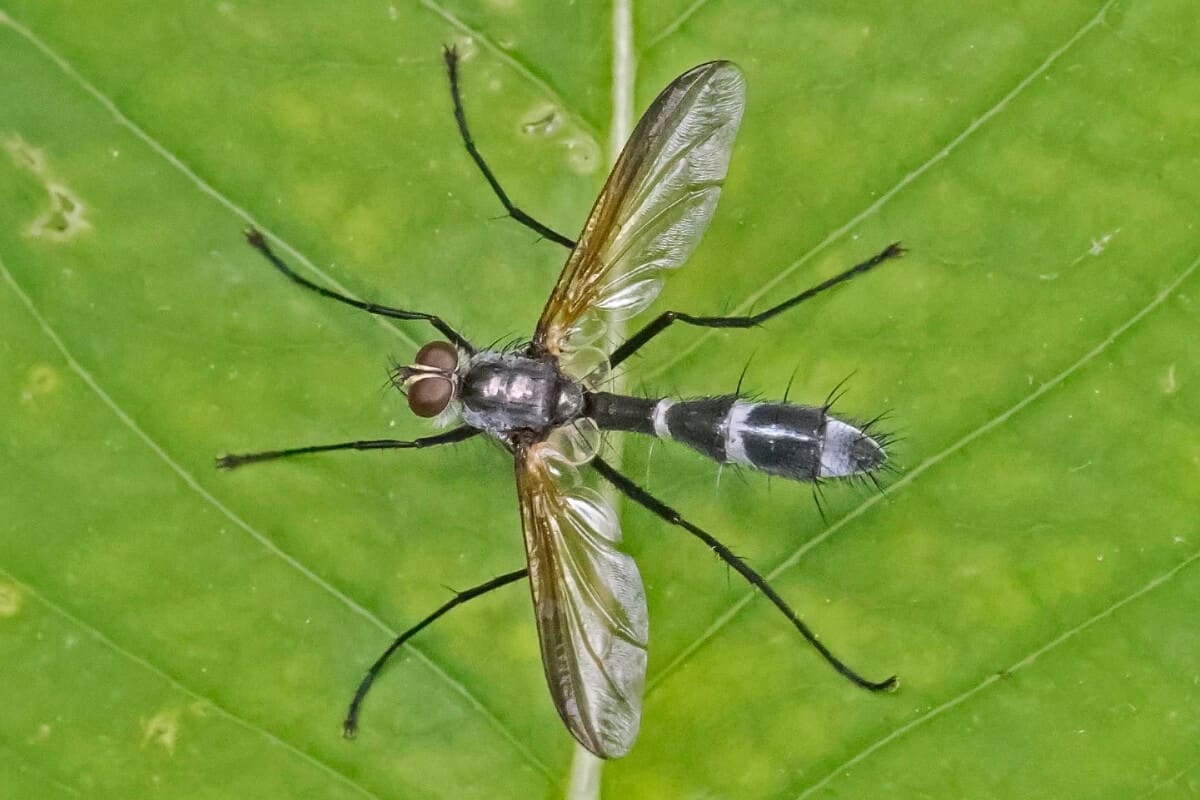
Tachinids flies have the nickname of hedgehog because the stiff hairs that cover their bodies resemble the needles of a hedgehog.
There are many species of tachinid flies, and many of them are parasites that lay their eggs on other insects. The larvae develop in the body of their victim, where they feed on its tissues from the inside.
Once they are fully grown, the larvae then move into the soil where they turn into pupas.
Some of the insects that tachinid flies parasitize are dangerous pests, such as Colorado beetles, bed bugs, or gypsy moths.
As adults, they instead feed on nectar and pollen. Despite their usefulness, they might not be the best choice for indoor pest control, unless you enjoy having flies around the house.
10. Fire Beetles (Pyrophorus Species)
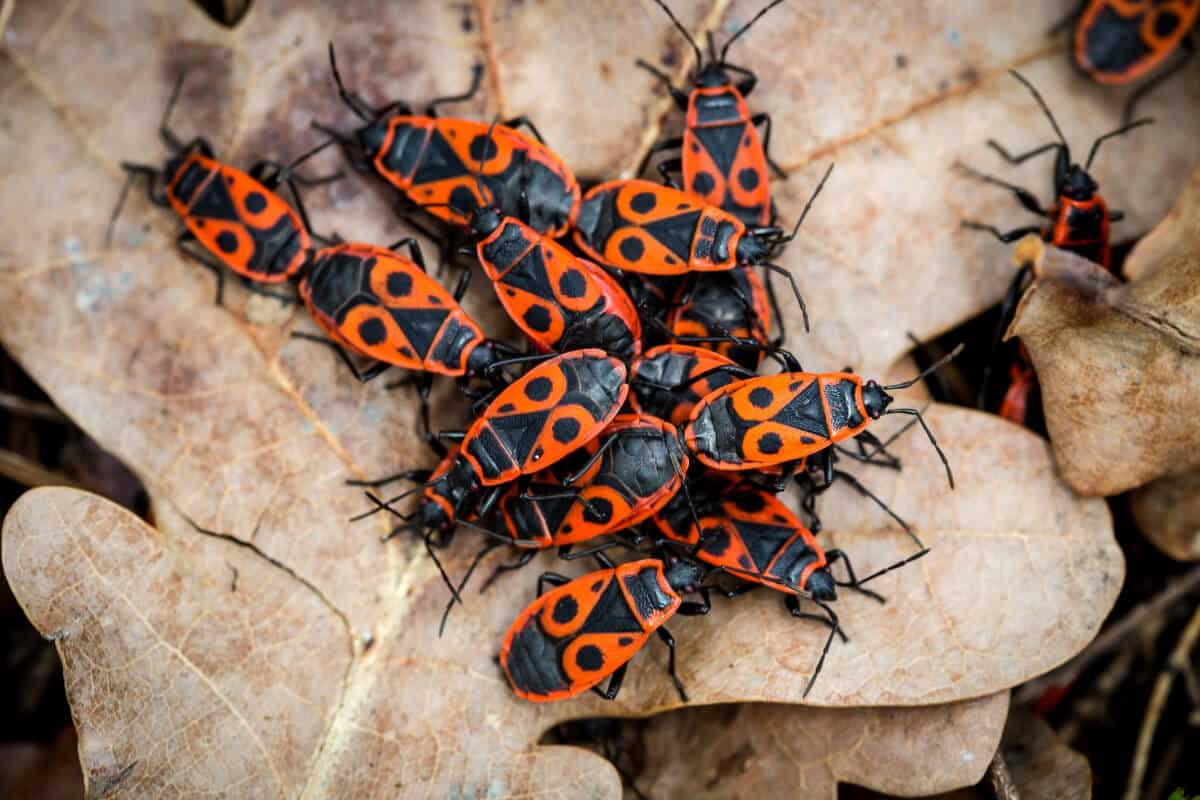
Fire beetles are bioluminescent insects, like fireflies. They have three spots on their bodies that are constantly glowing and get brighter when they are in danger. Their eggs and larvae are also luminous.
These beetles are useful to fight damaging pests, such as aphids and certain species of flies, as well as other beetles.
They also feed on pollen and as adults can eat the leaves and buds of some plants if their preys are not present.
For this reason, some people consider them pests, but the damage they make is negligible, especially if compared to their benefits.
11. Trichogramma Species
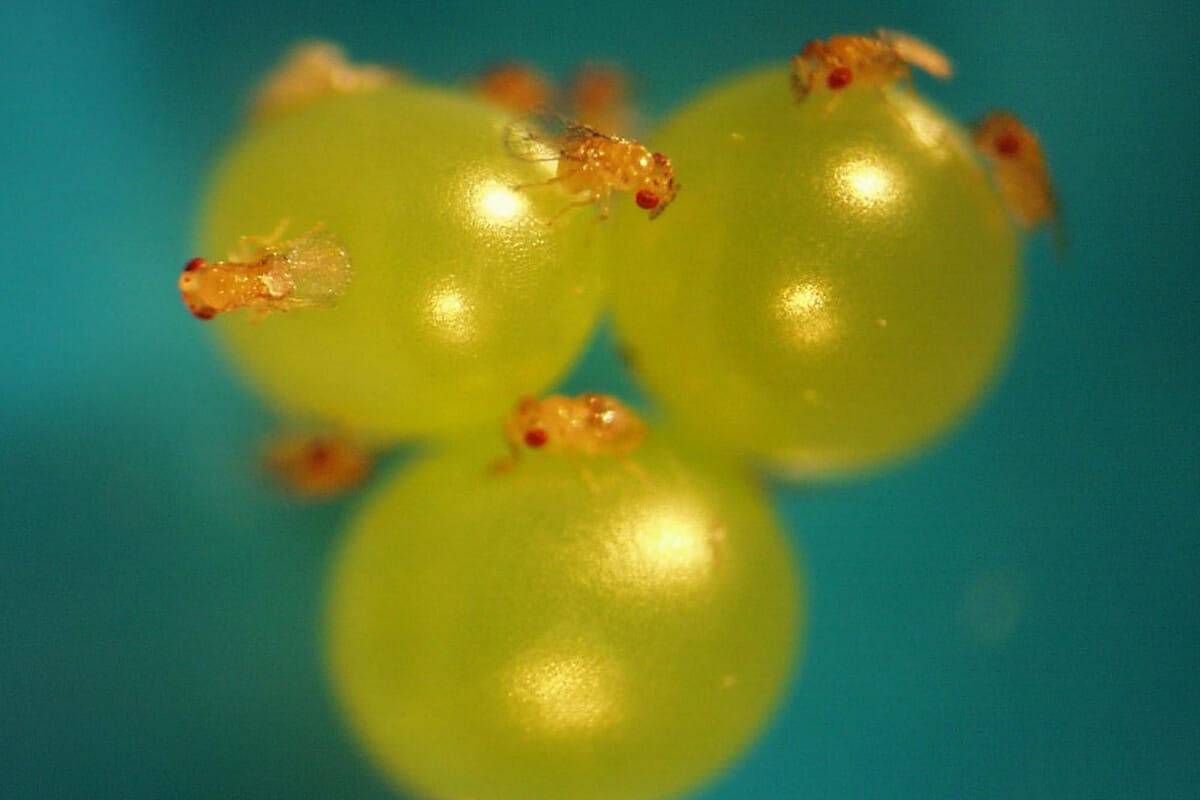
Trichogramma are a genus of small wasps that parasitize the eggs of many pests, especially moths and other lepidoptera.
They are extremely effective because they prevent the larvae of the pests from developing, thus avoiding the huge damage they would cause.
Trichogramma have been used to control pests in greenhouses, such as on peas and cabbage, and also to prevent pests in packaged food products.
They are in fact the most used biological control agents in the world.
The huge advantage of Trichogramma is that they are extremely small, so you won’t be able to see them flying around the house.
It has been shown that these insects have a longer life if they have a secondary food source available, such as pollen and nectar.
Beneficial Bugs for Houseplants Final Thoughts
Beneficial insects are amazing creatures. They help keep our environment clean and beautiful and they benefit our common houseplants by fighting off harmful plant pests.
By introducing these beneficial insects to your houseplants, you’ll be able to grow healthier, happier plants that look fantastic year after year.
With the lists of beneficial bugs above you can choose which one you think can help your indoor plants best.
The use of beneficial bugs to keep pests at bay is an effective and eco-friendly way to keep your plants healthy. So what are you waiting for? Discover the wonders of these beneficial bugs now!
Find out more about bugs by exploring these one-of-a-kind articles below:
- Beneficial Insects in the Garden
- Good Insects in Compost
- Best Predatory Insects
- Houses for Beneficial Garden Insects
Sources:
- https://www.maine.gov/dacf/php/integrated_pest_management/school-ipm-curricula/elementary/documents/K1_U5_L1_LadybugsTo.pdf
- https://ipm.ucanr.edu/natural-enemies/mealybug-destroyer/
- https://entnemdept.ufl.edu/creatures/BENEFICIAL/Neoseiulus_cucumeris.htm
- https://www.science.gov/topicpages/r/rove+beetles+staphylinidae.html
- https://extension.umd.edu/resource/tachinid-fly

